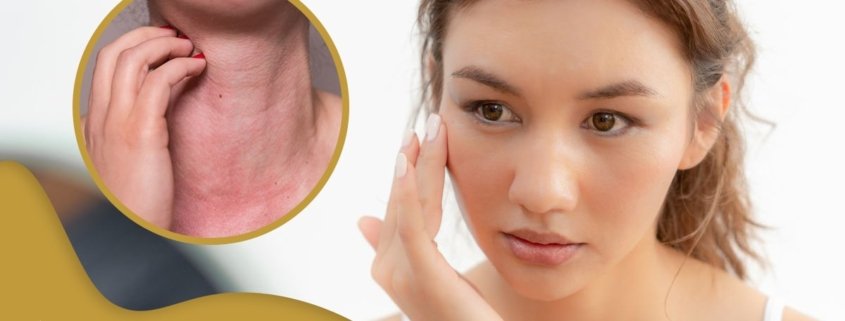What are the Most Common Rashes?
No matter what kind of rash you may have, if it lasts for more than a few days, you should make an appointment with us as soon as possible.
Common rashes can happen for a variety of reasons and therefore have a variety of different treatment options.
Here are a few common rashes that we encounter on a daily basis:
Atopic Dermatitis
Atopic dermatitis is the most common type of eczema. It might be inherited genetically and is commonly found in children and patients with asthma or hay fever. It’s usually found in the elbows or knees, as well as the cheeks, neck, wrists and ankles. Other forms of dermatitis include seborrheic, contact and stasis. All of these forms of dermatitis are red and itchy. At Charleston Dermatology, we can help soothe the itch and make dealing with dermatitis a little more bearable!
Psoriasis
It’s estimated that 125 million people worldwide have psoriasis, so we’d say it’s pretty common. Psoriasis is a scaly rash that results in dry, sometimes itchy patches. Unfortunately, psoriasis is a chronic disease that has no cure. However, there are many treatment options to make it more bearable.
Hives
Hives are technically known as urticaria. They appear on the skin as swollen bumps or plaques and can appear anywhere on the body. They are usually itchy and are caused by an allergic reaction, but can also pop up for unknown reasons.
Nummular Eczema
Nummular eczema may occur after a skin injury or insect bite. It appears as a coin-shaped lesion or lesions and can last for several months. Nummular eczema occurs more often in men than women. Luckily, it isn’t contagious!
Miliaria
Heat rashes are often found on babies, but can also occur with adults. There are more than 200,000 cases in the United States each year, so it’s very common. Heat rashes are caused by blocked sweat ducts and trapped sweat beneath the skin. It usually goes away on its own.
Poison Ivy Rash
Poison ivy rash is caused by an allergic reaction to an oily resin called urushiol that is found in the poison ivy plant. Usually it goes away on its own, but you can speed up the process by taking an antihistamine, applying hydrocortisone cream and not scratching (that’s the toughest part).
Athlete’s Foot
Also known as tinea pedis, athlete’s foot is very contagious and is seen in more than three million cases in the United States every year. It’s a fungal infection that usually begins between the toes and can usually be treated by using topical antifungal medications.
If you’re suffering from a rash that you’re unsure about, don’t hesitate to reach our expert dermatologists.
Call our Patient Care Lines: (+632) 7-368 5238 l (+63) 917 862 7454 l (+63) 921 217 0517 for inquiries, questions, and appointments or talk to our consultants via LiveChat at https://shinagawa.ph so we can address and answer them for you.





Leave a Reply
Want to join the discussion?Feel free to contribute!